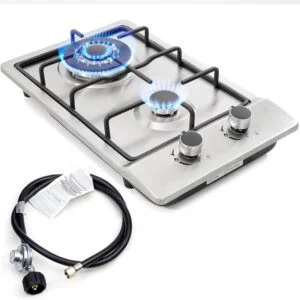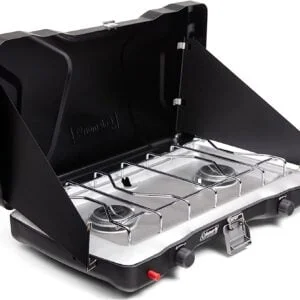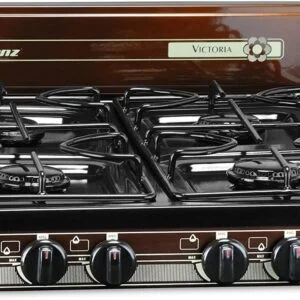Department
Stoves
Propane Stoves
- Propane Gas Stoves
- Single Burner
- 2 Burner
- 3 Burner
- Propane Kitchen Stoves
- Heavy Duty Propane Burners
- Heavy Duty Single Burner
- Heavy Duty Double Burner
Burners
Cooktops
Enhancing Culinary Versatility: The Marvels of 3 Burner Gas Stoves
3 burner gas stoves have become a popular choice for modern kitchens, offering enhanced culinary capabilities for households, professional chefs, and culinary enthusiasts alike. With an additional burner, these stoves provide greater flexibility, allowing multiple dishes to be prepared simultaneously. In this comprehensive guide, we will explore the features, advantages, safety considerations, and maintenance tips for 3-burner gas stove.
1. Features and Types:
3 burner gas stoves come in various designs and offer a plethora of features to meet diverse cooking needs. Some common features include:
- Ignition Type: Like 2 burner stoves, 3 burner stoves can come with manual ignition or automatic ignition options.
- Burner Size and Configuration: The three burners may have different sizes and power ratings, accommodating various cooking tasks, from gentle simmering to high-heat searing.
- Pan Support: Sturdy and well-spaced pan supports ensure stability for different sizes and weights of cookware.
- Flame Control: Precise flame control knobs allow for easy and instant adjustments of the heat levels for each burner.
2. Advantages:
- Multi-Tasking: The primary advantage of 3 burner gas stoves is the ability to cook multiple dishes simultaneously, saving time and effort in the kitchen.
- Efficiency: With the instant and precise heat control offered by gas stoves, users can enjoy efficient cooking and better control over their recipes.
- Ample Cooking Space: The spacious cooktop allows for the use of larger cookware and multiple pots and pans at the same time, making it suitable for cooking for larger groups or families.
- Versatility: The three burners cater to a wide range of cooking styles, from slow cooking to high-temperature stir-frying, making them suitable for a variety of cuisines.
3. Safety Considerations:
- Proper Ventilation: Ensure that your kitchen has proper ventilation to disperse any gas fumes and prevent the buildup of harmful gases.
- Gas Leaks: Regularly check for gas leaks by applying a mixture of soap and water to the connections. If bubbles form, there is a leak, and the stove should not be used until the issue is fixed.
- Flammable Items: Keep flammable items such as kitchen towels, paper, and plastic away from the gas stove while cooking.
- Child Safety: If you have children at home, consider using safety knobs or lock guards to prevent accidental ignition.
4. Maintenance:
- Cleaning: Regularly clean the burners, pan supports, and cooktop surfaces to prevent grease and food buildup. Use mild detergent and a soft cloth or sponge for cleaning.
- Burner Maintenance: Check the burners for clogs and clean them with a fine needle or brush if necessary.
- Gas Hose and Regulator: Inspect the gas hose and regulator for any signs of wear or damage. Replace them immediately if needed.
- Professional Servicing: Schedule professional servicing at least once a year to ensure the stove’s safe and efficient operation.
Conclusion: The addition of a third burner in 3 burner gas stoves elevates the cooking experience, providing users with enhanced culinary versatility and efficiency. The ability to cook multiple dishes simultaneously saves time and effort, making it a valuable asset for busy households and cooking enthusiasts. By adhering to safety guidelines and performing regular maintenance, a 3-burner gas stove can become a reliable and indispensable kitchen companion, supporting a wide array of culinary adventures and delectable creations.





